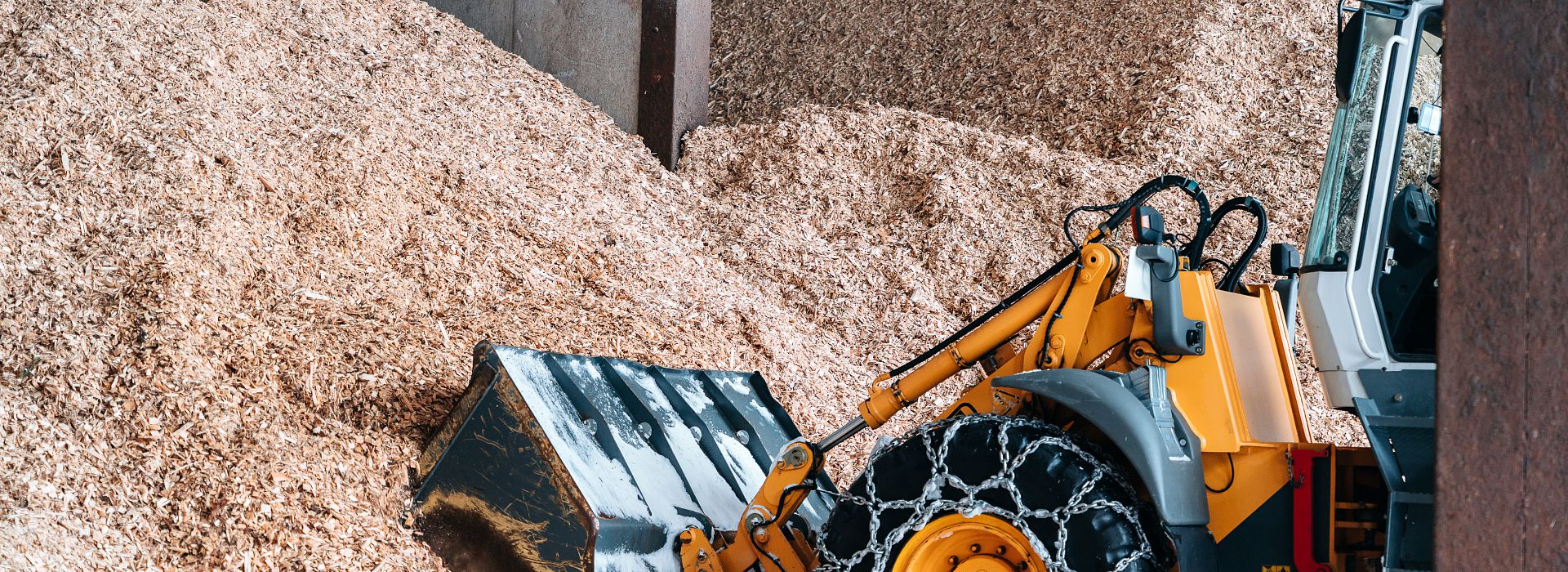
NATURAL WARMTH FROM WOOD
E N E R G I A L E N E R G Y
In contrast to fossil fuels such as oil, coal and gas, renewable energies are forms of energy that do not rely on finite resources. The use of wind, water, solar or bioenergy reduces CO2 emissions and makes a significant contribution to sustainability. In Damüls, biomass has been used for heating and hot water production for 19 years. Renewable wood from Vorarlberg is used as fuel. Since the heating plant was built, 10.5 million liters of heating oil have been saved as a result.
The fact that we can breathe particularly deeply in the mountains is not only due to the mountain air in the resorts of Damüls and Faschina. The biomass heating plant in Damüls, which has been in operation since 2003, is responsible for the fact that CO2 emissions in the climatic health resort have been reduced by 85 percent. Using waste wood from the surrounding sawmills and damaged wood from the regional forest, the heating plant distributes ecological heat to almost every house in Damüls.
Facts biomass heating plant Damüls
- Commissioning : December 2003
- Retrofit of the system : 2021
- Biomass boiler output 1 : 1,500 KW
- Biomass boiler output 2 : 1,000 KW
- Wood requirement: approx. 12,000 cubic meters/year
- Oil savings: 600,000 liters/year
- Heat supply : 6,500,000 KWH
- Boiler output Fossil fail-safe : 4,000 KW
- Heat customers: 75
- Heating network length : 6 km
- 17 Shareholders
HOW AN IDEA BECOMES REALITY
Karl Türtscher initiated the project together with other community leaders. "After a rough and successful detailed study, we went from house to house to convince all residents of the ecological benefits of the renewable energy source," explains the electrician. In addition to the construction decision, a six-kilometer-long network of cables also had to be laid underground. "It only worked because everyone - landowners and farmers - pulled together," says the idea generator. With strong partners and shareholders such as the municipality of Damüls, the Vorarlberg power plants (illwerke vkw), the Damüls cable cars, Raiffeisenbank, the diocese of Feldkirch, the provincial road construction office and some private individuals, the municipality ultimately realized one of the most innovative biomass heating plants of its time. Today, 96 percent of all properties in the catchment area are connected and are supplied with heat from local wood - more wood grows in Vorarlberg than is consumed. Every autumn, the 4,000 bulk cubic meter store is filled with wood chips to get through the winter. "We use 12,000 bulk cubic meters of wood per year, which replaces around 600,000 liters of oil. Since commissioning the pioneering plant, we have been able to save the equivalent of around 30 million kilograms of CO2," emphasizes Karl Türtscher.
HOW WOOD BECOMES HEAT
How does it all work? Storing the damaged wood or wood chips for several months dries the fuel, which increases the energy yield in the subsequent combustion process. The wood chips are removed from the storage facility by means of a shovel loader and filled into the day bunkers of the combustion plants. The fuel is fed into the firebox via a hydraulic conveyor system. Controlled and monitored combustion takes place here. The energy from the flue gas is then transferred to the heating network in boilers via very large heat exchangers.
The flue gas is then cleaned. In addition to the latest generation of electrostatic precipitators, a combination of condensation and desulphurization systems is also used. This ensures a local appearance without a steam plume and increases the efficiency of the system to up to 95 percent. This describes the efficiency of the technical system, i.e. the ratio between the energy input and the usable heat generated. "To compensate for peak loads and ensure harmonious operation, there is also a 65,000 liter buffer storage tank. From here, the heat reaches the consumers via three network pumps," explains Richard Türtscher, the passionate operations manager of the heating plant. Together with two colleagues from the municipality's building yard, Richard looks after the operation of the Damüls biomass heating plant on a daily basis. They are responsible for operations management, fuel and ash logistics, as well as monitoring, maintaining and servicing the plant. "Refilling wood chips, cleaning the ovens, taking water samples, checking whether the pH value and conductivity are correct - that's all part of our job," says the heating engineer. Although the system works fully automatically, the three of them also work on standby and are on hand immediately in the rare event of a malfunction. "We guarantee a fail-safe heating system for an entire village that provides a total of 6.5 million kilowatt hours of energy 365 days a year. That's really something special," emphasizes Walser, who himself is one of the heating plant's satisfied customers.
HOW ENERGY BECOMES THE FUTURE
In the medium term, biomass is also set to become the most important source of heating energy in Vorarlberg. The Damüls heating plant not only secures the ecological and sustainable heat supply of the municipality, but also makes an important contribution to Vorarlberg's energy autonomy, according to the state government. Initiator Karl Türtscher has a similar view: "We have to use energy carefully, then nature is helped the most. In Damüls, almost twice the amount of wood grows back than we are able to burn. By using the damaged wood from the forests and the by-product of the sawmills, the wood is not lost, but is processed sensibly in the heating plant." So if you enjoy a warm shower after a fantastic day of hiking or skiing in Damüls, you can do so with a clear conscience: Here, heat and hot water are generated using regional wood and working in a circular economy based on nature's example.